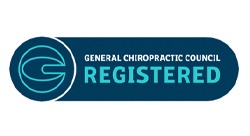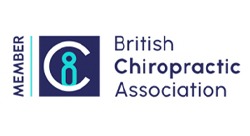XRay, MRI, Ultrasound & DXA Scan Referral
However, sometimes further tests are a good idea and we have various very useful options at our disposal.
The type of investigation you might need will depend on what is suspected. All types of scan referral are done quickly and easily and arranged for a time that suits you, and the results are back with us within a day or two.
X-Rays
A form of imaging that is widely known and utilised, x-rays are used to produce images of the inside of the body in a safe and painless way.
In a hospital x-rays are often used to check for fractures and breaks in bones but they are also useful to our chiropractors when checking for other problems too.
X-rays may show degenerative changes (wear and tear) as an underlying cause to your problem. Disc or joint degeneration of the spine are common reasons why you might have back or neck pain, and these things do happen as we get a little older.
If you have degenerative changes it does not mean that you can’t feel better or even get rid of the pain completely, but it might mean the pain you are feeling proves to be a bit more stubborn or recurrent.
X-rays may also be used to evaluate scoliosis, assess an area after significant trauma or check for a suspected spondylolisthesis or other instability, amongst other issues.
Having an accurate diagnosis always improves decision-making regarding the treatment plan and this is why x-rays can sometimes be helpful and they can be easily arranged. However, our chiropractors do not routinely send our patients for x-rays and will only do so if they feel there is real value in doing so.
You will of course be able to ask questions about what is involved and you will be able to choose the type of treatment that is carried out.
Once you are happy to proceed you will be asked to give your written consent to treatment, which can be carried out there and then. The whole process from start to finish takes up to one hour.
How many sessions of treatment you will need will depend on what the problem is, how bad it is, how long you have had it and how much improvement you want to achieve.
A session or two might be enough to make a big enough difference to you, although this may only provide a short-term fix. Three or four sessions usually provides a better solution in very straightforward cases, but you could find that 10 to 12 sessions is recommended if the problem is predicted to be stubborn to alleviate.
But you could say, on average for our clients, five or six sessions are usually carried out. However, how many sessions you actually have is always up to you! You can stop treatment whenever you like and you will never be asked to commit to a minimum number. All we will do is make recommendations.
Please know that we will be upfront with you if we are unable to help and you will be referred to the appropriate health professional such as your GP or a specialist.
Although such referrals are uncommon we are always on the lookout for problems that we cannot treat. Chiropractors are trained to recognise the signs and symptoms of such problems and no case is ever assumed to be straightforward until it is concluded otherwise.
All details of your first and subsequent visits will be kept as part of your clinical notes. These are strictly confidential and nobody will be allowed to see your records without your permission but you will always be entitled to copies.
MRI stands for Magnetic Resonance Imaging. Strong magnetic fields are used during an MRI scan to create images of a part of the body. An MRI differs from x-rays in that it is able to show soft tissues as well as bones.
This is very useful to use if you are suffering with a suspected disc problem, sometimes called a slipped disc but more accurately known as a disc bulge, herniation, protrusion or prolapse. A disc problem like this can put pressure on a nerve (resulting in a trapped nerve), which can give rise to severe pain in your back and also down your leg. It can also cause numbness, tingling and weakness.
MRI scans can also be used to assess other types of problems such as those affecting the shoulders or knees and other joints and muscles of the body. Being able to see the problem from the inside gives a much clearer idea of what treatment would be best and, importantly, whether or not we will be able to help you.
Should you require an MRI scan your chiropractor will make the necessary arrangements so that you may have one as soon as is convenient, which could even be on the same day.
Having an ultrasound scan normally requires you to lie down as a water-based gel is applied to the skin over the region being scanned. Ultrasound scans use high frequency sound waves to create an image of structures inside the body.
The images are projected on-screen in real time so the clinician carrying out the scan can look from various angles as they search for the problem.
Our chiropractors may refer you for an ultrasound if they suspect there is an injury to a muscle, tendon or ligament, perhaps as a result of a sporting injury.
Having a DXA scan is an accurate way of measuring your bone density. DXA stands for dual-energy X-ray absorptiometry and during a scan a low dose of x-rays are aimed at a bone in order to calculate the mineral content. This measurement is then compared to people of a similar age, weight, sex and ethnic background.
You might benefit from having a DXA scan if you are suspected of having osteoporosis or another condition that causes bone loss or weakening. Detecting bone loss early may allow further loss to be limited or even prevented and it will also highlight any risk of fracture.
Having a DXA scan is quick and easy to arrange and the process of having one takes about 30 minutes.
However, sometimes further tests are a good idea and we have various very useful options at our disposal.
The type of investigation you might need will depend on what is suspected. All types of scan referral are done quickly and easily and arranged for a time that suits you, and the results are back with us within a day or two.
X-Rays
A form of imaging that is widely known and utilised, x-rays are used to produce images of the inside of the body in a safe and painless way.
In a hospital x-rays are often used to check for fractures and breaks in bones but they are also useful to our chiropractors when checking for other problems too.
X-rays may show degenerative changes (wear and tear) as an underlying cause to your problem. Disc or joint degeneration of the spine are common reasons why you might have back or neck pain, and these things do happen as we get a little older.If you have degenerative changes it does not mean that you can’t feel better or even get rid of the pain completely, but it might mean the pain you are feeling proves to be a bit more stubborn or recurrent.
X-rays may also be used to evaluate scoliosis, assess an area after significant trauma or check for a suspected spondylolisthesis or other instability, amongst other issues.
Having an accurate diagnosis always improves decision-making regarding the treatment plan and this is why x-rays can sometimes be helpful and they can be easily arranged. However, our chiropractors do not routinely send our patients for x-rays and will only do so if they feel there is real value in doing so.
You will of course be able to ask questions about what is involved and you will be able to choose the type of treatment that is carried out.
Once you are happy to proceed you will be asked to give your written consent to treatment, which can be carried out there and then. The whole process from start to finish takes up to one hour.
How many sessions of treatment you will need will depend on what the problem is, how bad it is, how long you have had it and how much improvement you want to achieve.
A session or two might be enough to make a big enough difference to you, although this may only provide a short-term fix. Three or four sessions usually provides a better solution in very straightforward cases, but you could find that 10 to 12 sessions is recommended if the problem is predicted to be stubborn to alleviate.
But you could say, on average for our clients, five or six sessions are usually carried out. However, how many sessions you actually have is always up to you! You can stop treatment whenever you like and you will never be asked to commit to a minimum number. All we will do is make recommendations.
Please know that we will be upfront with you if we are unable to help and you will be referred to the appropriate health professional such as your GP or a specialist.
Although such referrals are uncommon we are always on the lookout for problems that we cannot treat. Chiropractors are trained to recognise the signs and symptoms of such problems and no case is ever assumed to be straightforward until it is concluded otherwise.
All details of your first and subsequent visits will be kept as part of your clinical notes. These are strictly confidential and nobody will be allowed to see your records without your permission but you will always be entitled to copies.
MRI stands for Magnetic Resonance Imaging. Strong magnetic fields are used during an MRI scan to create images of a part of the body. An MRI differs from x-rays in that it is able to show soft tissues as well as bones.
This is very useful to use if you are suffering with a suspected disc problem, sometimes called a slipped disc but more accurately known as a disc bulge, herniation, protrusion or prolapse. A disc problem like this can put pressure on a nerve (resulting in a trapped nerve), which can give rise to severe pain in your back and also down your leg. It can also cause numbness, tingling and weakness.
MRI scans can also be used to assess other types of problems such as those affecting the shoulders or knees and other joints and muscles of the body. Being able to see the problem from the inside gives a much clearer idea of what treatment would be best and, importantly, whether or not we will be able to help you.
Should you require an MRI scan your chiropractor will make the necessary arrangements so that you may have one as soon as is convenient, which could even be on the same day.
Having an ultrasound scan normally requires you to lie down as a water-based gel is applied to the skin over the region being scanned. Ultrasound scans use high frequency sound waves to create an image of structures inside the body.
The images are projected on-screen in real time so the clinician carrying out the scan can look from various angles as they search for the problem.
Our chiropractors may refer you for an ultrasound if they suspect there is an injury to a muscle, tendon or ligament, perhaps as a result of a sporting injury.
Having a DXA scan is an accurate way of measuring your bone density. DXA stands for dual-energy X-ray absorptiometry and during a scan a low dose of x-rays are aimed at a bone in order to calculate the mineral content. This measurement is then compared to people of a similar age, weight, sex and ethnic background.
You might benefit from having a DXA scan if you are suspected of having osteoporosis or another condition that causes bone loss or weakening. Detecting bone loss early may allow further loss to be limited or even prevented and it will also highlight any risk of fracture.
Having a DXA scan is quick and easy to arrange and the process of having one takes about 30 minutes.


